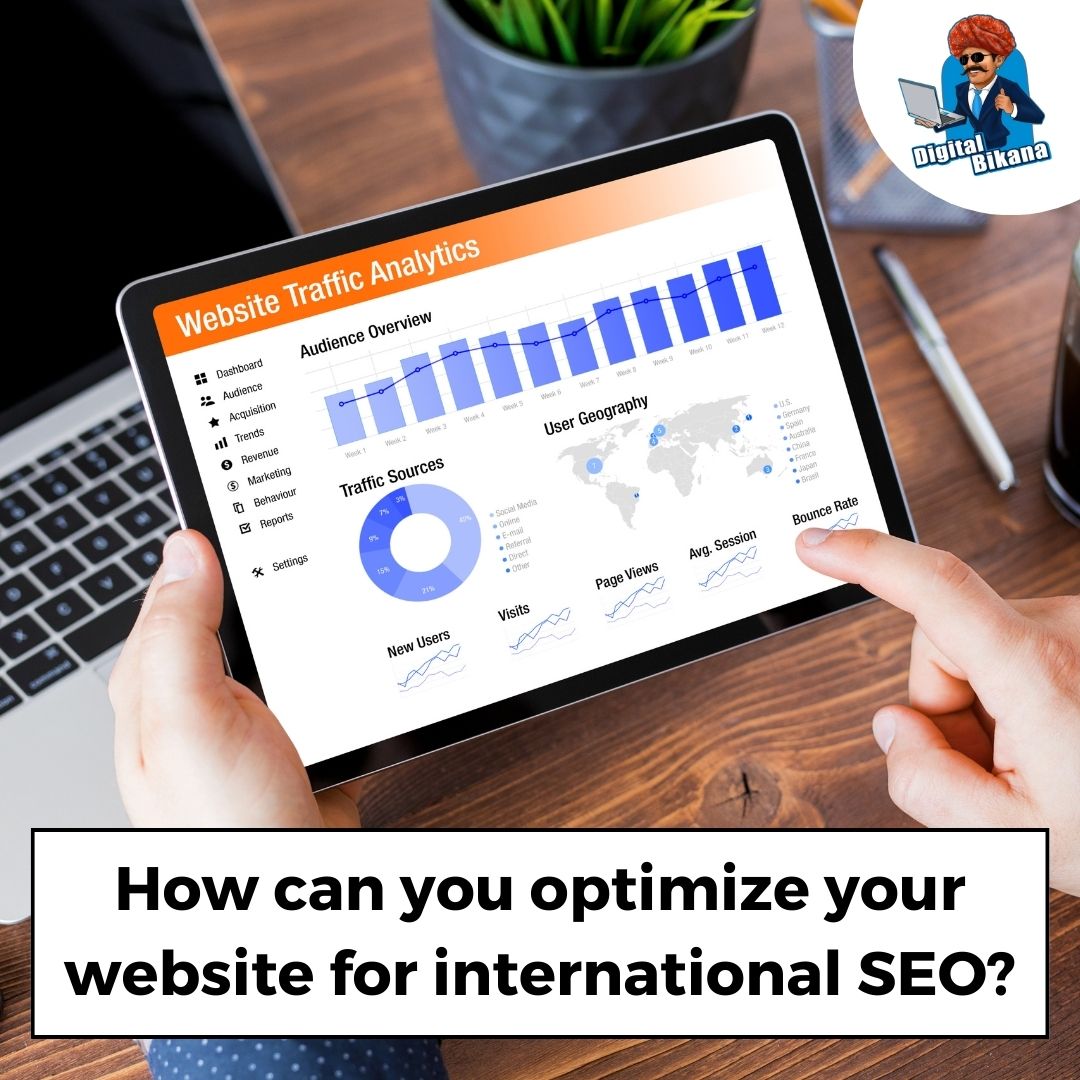How can you Optimize Your Website for International SEO?
In this article we are going to talk about How can you optimize website for international SEO. In an increasingly globalized world, expanding your online presence beyond borders is crucial for reaching new markets and attracting a diverse audience. However, achieving success in international markets requires more than just translating your website. It entails optimizing your website for international search engine optimization (SEO) to ensure maximum visibility and relevance in different regions and languages.
How can you Optimize Your Website for International SEO?
In this article, we will explore the key strategies and best practices to effectively optimize your website for international SEO.
1. Conduct Market Research
Before diving into international SEO, it is essential to conduct thorough market research. Identify target countries or regions where you want to expand your reach and understand their unique cultural, linguistic, and search behavior characteristics. This research will help you tailor your SEO strategy to each specific market, allowing you to create content and use keywords that resonate with local audiences.
2. Choose the Right Domain Structure
Your choice of domain structure can significantly impact your international SEO efforts. There are three main options:
a) Country Code Top-Level Domains (ccTLDs)
Using domain extensions specific to each country (e.g., .de for Germany, .fr for France) helps search engines identify the targeted country, making it easier to rank higher in local search results.
Read Also: How to buy a Domain Name for Free using Godaddy?
b) Subdomains
Employing subdomains (e.g., de.yourwebsite.com, fr.yourwebsite.com) allows you to create separate versions of your site for different countries. This approach can be beneficial when targeting multiple countries with distinct languages and cultures.
c) Subdirectories
Implementing subdirectories (e.g., yourwebsite.com/de, yourwebsite.com/fr) enables you to maintain a single domain while organizing your content based on language or country. This approach is often cost-effective and easier to manage.
3. Localize Your Content
Localization is critical for international SEO success. Translate your website content accurately and naturally into the target language, considering linguistic nuances, cultural references, and regional preferences. Tailor your content to resonate with local audiences, ensuring it reflects their needs, interests, and search behaviors. This includes adapting headlines, meta tags, URLs, and image alt tags to target keywords in the local language.

4. Implement Hreflang Tags
Hreflang tags are HTML tags that indicate the language and geographical targeting of a webpage. They help search engines understand which version of a page to display to users based on their location and language preferences. Implementing hreflang tags correctly is essential to avoid duplicate content issues and improve your website’s visibility in international search results.
5. Build Quality Backlinks
Backlinks play a crucial role in SEO, and this applies to international SEO as well. Develop a strong backlink profile for each targeted market by partnering with reputable local websites, bloggers, influencers, and industry directories. These local backlinks signal search engines that your website is relevant and trustworthy in a particular country, boosting your rankings in local search results.
Read Also: What is the Significance of Backlinks in SEO?
6. Optimize Website Speed and Mobile Responsiveness
Website speed and mobile responsiveness are vital for both user experience and SEO. Optimize your website to load quickly, as slow-loading sites can lead to higher bounce rates and lower rankings. Additionally, ensure your website is mobile-friendly, as mobile usage continues to rise globally. Mobile optimization is particularly important in regions where mobile devices are the primary means of accessing the internet.
Read Also: How Can You Optimize your Website for Mobile Usability?
7. Leverage International Schema Markup
Implementing schema markup using structured data helps search engines understand and categorize your website’s content. For international SEO, consider using schema markup specifically designed for multilingual and multiregional content. This can provide search engines with crucial information about the languages, countries, and translations of your web pages, improving their visibility in international search results.
8. Monitor and Analyze Performance
Regularly monitor and analyze the performance of your international SEO efforts. Utilize web analytics tools to track key metrics such as organic traffic, rankings, conversions, and engagement across different target markets. This data will help you identify areas of improvement, measure the success of your strategies, and make informed decisions to optimize your international SEO campaign continuously.
You can also checkout this digital marketing institute to learn digital marketing course by enrolling in our course Or Contact Digital Bikana on +91-8949483728

Conclusion:
Optimizing your website for international SEO is a multifaceted process that requires careful planning, localization, and understanding of each target market. By conducting thorough market research, choosing the right domain structure, localizing your content, implementing hreflang tags, building quality backlinks, optimizing website speed and mobile responsiveness, leveraging international schema markup, and monitoring performance, you can significantly enhance your website’s visibility and relevance in international search results. Embrace these strategies, adapt to cultural nuances, and engage with local audiences to successfully expand your online presence across borders. So, Now I hope you have understood about How can you Optimize Your Website for International SEO?

